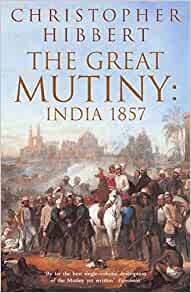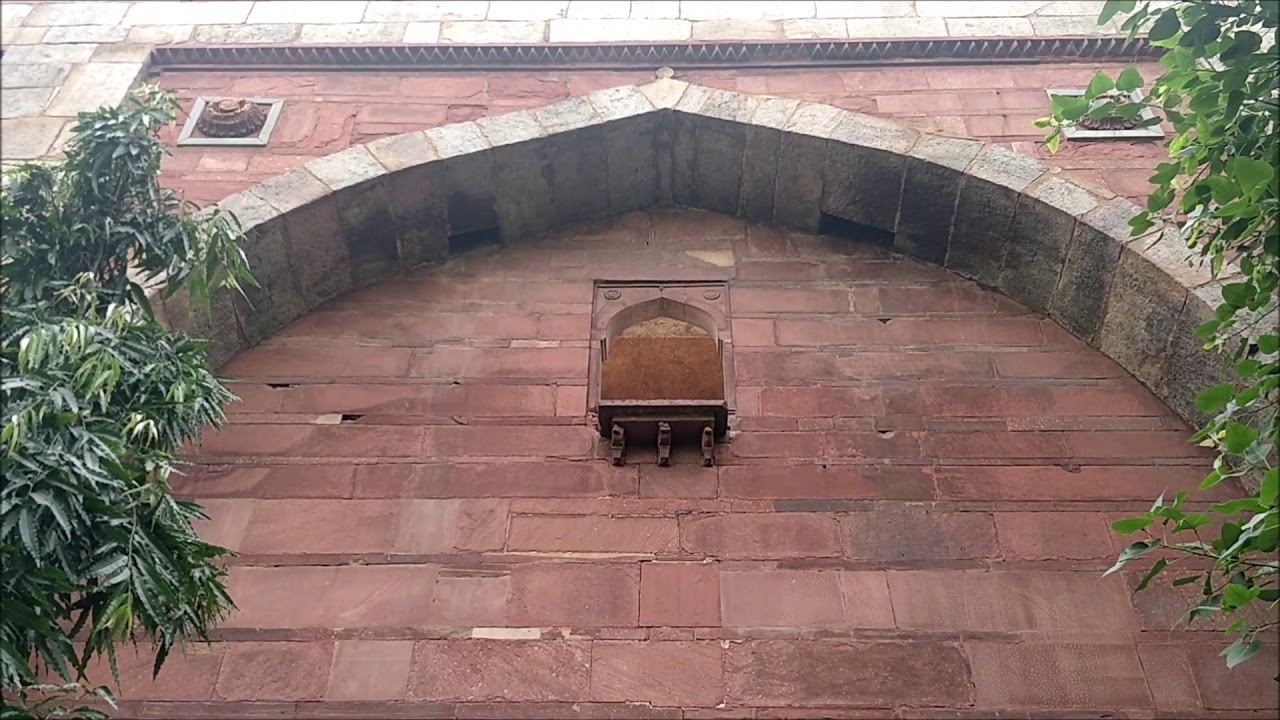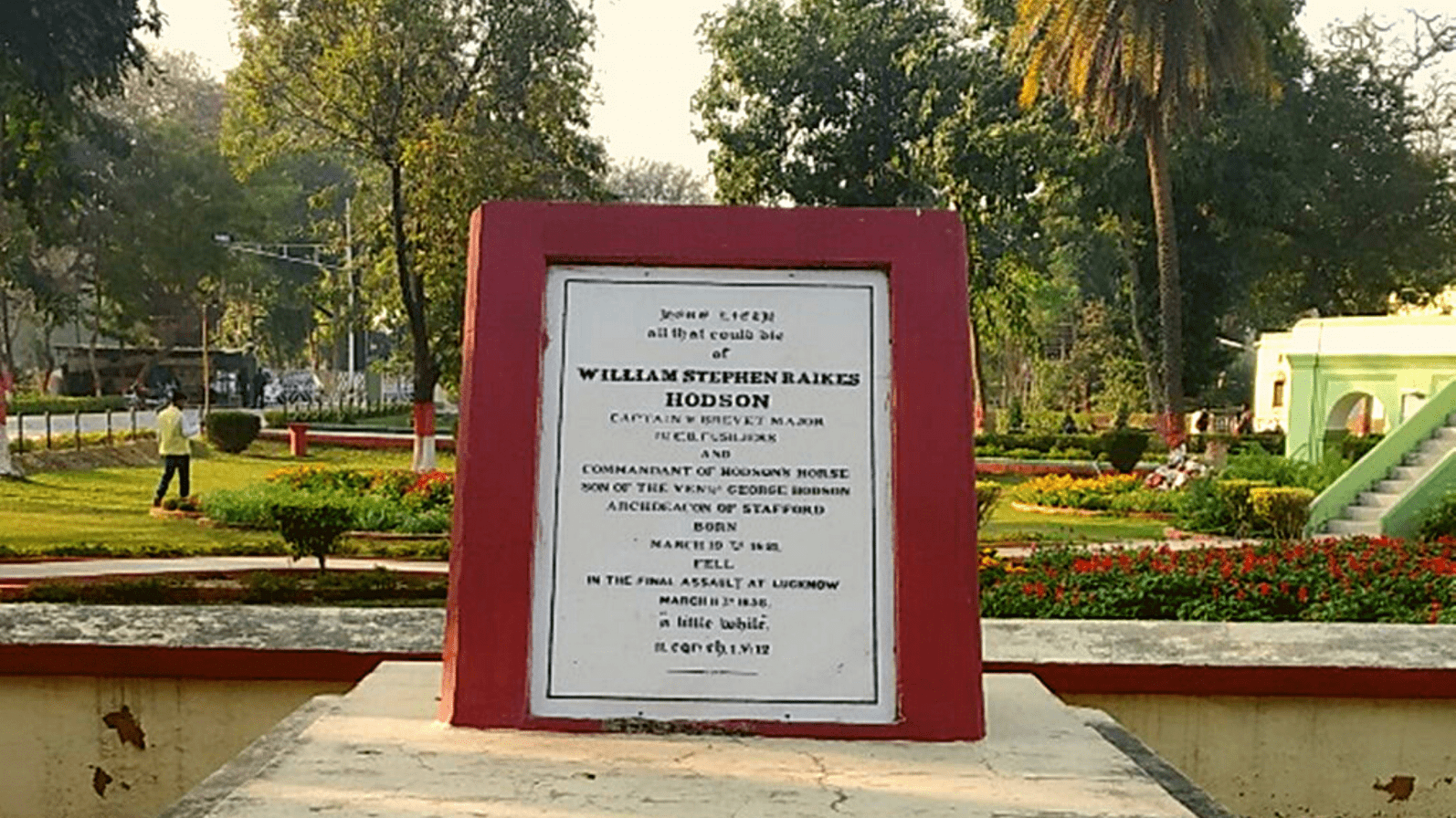Earlier this year, I was at La Martiniere College in Lucknow when I saw the grave of Major William Hodson of ‘Hodson’s Horse’. All I knew about him was that he was responsible for the creation of the famous cavalry unit during the mutiny of 1857.
I clicked a photo of the grave almost as an afterthought because nothing written on the gravestone or around it suggested that he was an important figure in India’s history.
After spending some time in the company of the ruins of the mutiny at Lucknow, I decided to read Christopher Hibbert’s book The Great Mutiny – India 1857. Towards the end of the book, I reached the part where the British took Delhi from the rebels after a siege and sealed the fate of the last Mughal king, Bahadur Shah Zafar.
It was then that I realised that William Stephen Raikes Hodson, whose grave I had seen back at La Martiniere, was the one who captured India’s last Mughal king and executed the last Mughal princes of India.

The Great Mutiny – India 1857
Christopher Hibbert
Penguin India
On September 20, 1857, the British had defeated the rebels in Delhi. A spy told Hodson that the king was hiding in his ancestor Humayun’s Tomb not far from the city. Hodson was granted permission to capture the king and made his way to the tomb with 50 troopers. Two emissaries went in to tell the king that if he surrendered, his life and that of his queens would be spared. The emissary returned saying that the king would surrender if Hodson reiterated the government’s guarantee of safety himself. Hodson held his sword in his hand and announced the promise again to the white domes of the tomb.
A little later, the king emerged in a palki (palanquin) and surrendered to Hodson. His subjects must have known that they were witnessing a turning point. The British, who had at one time been stunned by emperor Jahangir’s splendour, and begged him for a farman (decree) to trade in his kingdom, were now taking his descendant as a prisoner. The dynasty that Delhi had known for centuries was coming to an end. As Hodson made his way to Delhi with the king, thousands walked in their wake.
The next morning, Hodson resolved to bring the king’s sons in, who were camped close to where their father had hid. Hodson had a hundred men with him and the princes were surrounded by two to three thousand followers. When they were asked to surrender, they too asked if their lives would be spared. But the reply came that they must surrender ‘unconditionally’, or face the consequences.
At this point, many supporters shouted and urged the princes to attack the British. The British were heavily outnumbered, but the princes must have realised that they would have to surrender sooner or later. Delhi was lost and they hoped that since their father’s life had been spared, theirs would be too if they surrendered without incident.
Soon, crown prince Mirza Mughal, Mirza Khizr Sultan and the king’s grandson Mirza Abu Bakr emerged on a cart with their followers trailing behind them.
Hodson told the driver of the cart to drive towards Delhi and when the crowds continued walking behind the princes, he pointed his carbine at them and said that the first man to move would be dead. Ten of his cavalrymen rode ahead with the princes while Hodson ordered their followers to lay down their arms. It was a tense moment. There were a lot of angry stares and murmuring among the men, but they finally put down their arms. The British thought that it may have been a ploy, but the king and princes had clearly surrendered. There wasn’t anyone left to fight for.
Also read: A Rare Peek Into the 1857 Revolt, One of the First Wars to Be Caught on Camera in the World
When the British had collected their arms, Hodson and Lieutenant Macdowell, second-in-command of Hodson’s Horse, rode on and caught up with the cart carrying the princes. They were asked to alight and were stripped of their clothing.
Hodson then took out his carbine and shot all three princes point blank. He removed a turquoise armlet, their signet rings and their swords as trophies from the “rascally princes”, saying it would be, “quite something hereafter to wear a sword taken from the last of the House of Timour”.
The spot where they were killed was an old gate of Delhi which from that day onwards came to be known as ‘Khooni Darwaza’ – the bloody gate or the murder gate. Their bare bodies were displayed at the Kotwali in Chandni Chowk. Hodson wrote,
“I cannot help feeling pleased with the warm congratulations I received on all sides on my success in destroying the enemies of our race.”

Khooni Darwaza, Delhi. Photo: YouTube screenshot.
Hodson had hoped to present the swords to the young Queen Victoria and was sure he would get anything he asked for in return for the risks he took. But he would not get the opportunity. He died during the last days of the fighting at ‘Begum ki Kothi’ in Lucknow where he had gone to share in the spoils of the Awadh loot. A rebel bullet pierced his liver and his last words were, “I hope I’ve done my duty.”
The murder of India’s last Mughal princes is a largely forgotten episode today. I can’t help but compare this to the talk and interest that the death of Czar Nicholas’ family in Russia received. People across the world wondered about their fate. The search for their bodies lasted decades.
I wonder where the bodies of the last Mughal princes are now.
While we struggled to overthrow colonialism, we carried on with institutions that were necessarily shaped by it. The clearest example of this is the Indian army where regiments remember their colonial histories with pride. The ‘Hodson’s Horse’ of William Hodson that was created in 1857 to quell the mutiny, is the armoured fourth Horse of the Indian Army in its current avatar. Hodson was also instrumental in establishing the famous The Lawrence School, Sanawar, in 1847 and the school remembers him fondly. Their most famous annual sporting event is Hodson’s Run, a 3-5 km run around the school to commemorate him.
As with people, institutions also tend to mimic practices of those that are higher up in the prestige hierarchy.
When my cousins studied at La Martiniere, Hodson’s grave was covered with weeds and he wasn’t a part of the school curriculum. At some point, with his grave within their premises, the school decided to take a cue from The Lawrence School, Sanawar.
At La Martinière College, Hodson has been brought back to life – today, when my cousin’s children study there, one of the four houses of the school is named after Hodson. There is now a ‘wreathing ceremony’ where a wreath is placed at his grave every year to commemorate him and the values of honour, bravery and loyalty that he represents. This is now followed by their own ‘Hodson’s Run’.
But when we use history to legitimise the present, we do it in a way that works for us. His murder of India’s last Mughal princes is inconvenient. Which is why neither students in Lawrence School nor La Martiniere are told about it. This is why no placard near his grave mentions it.
Some stories are best left untold.
It is fitting then that his grave, now cleared of weeds, begins with the words,
“Here lieth all that could die of William Stephen Raikes Hodson.”
Ayush Khanna is a Data Scientist from Bangalore who writes on history and politics.
Featured image provided by author

